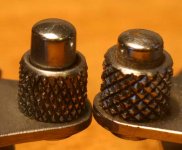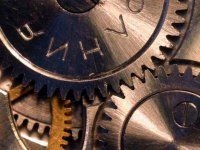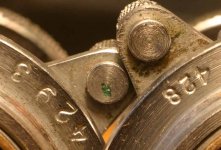Using an enlarger to measure lens's working distance
Using an enlarger to measure lens's working distance
zhang xk said:
Hi Comrade Jay,
Thanks for the Fed servival education.😀 It is very difficult to set a correct registration distance for a correct pre-war I-10 lens on a given pre-war Fed-1.:bang:
Zhang
你 好 Comrade Zhang
According to Maizenberg, the camera was often adjusted to suit the lens as working on the latter is more difficult. He described a double-helical focusing tube used for measuring the lens's working distance.
I use enlarger parts from an toy Jufeng (-a Chinese connection!
🙂) enlarger. The negative stage and the focussing bellows are used. The I-10 would fit well on its lens mount since it uses an M39 thread, like most enlargers. The parts are used like a little view camera. The film holder is fitted with a focusing screen made from a microscope glass slide with some Scotch 'magic tape' stuck very well on one side. The use of glass is necessary because a rigid surface is needed for measurement with a depth caliper.
The rig is used horizontally. The lens is pulled out to shooting position, locked at infinity and then mounted on the enlarger lens mount. It is then pointed to a very distant object. The bellows are racked until a sharply focused image is seen on the groundglass. A magnifier on the other end of the focus screen helps in observing the focus.
Once sharp focus is seen, the bellows focus knob is locked and the lens is removed. The lens board's relative position when the focus was set has to be carefully maintained. The distance between the lens mount flange and the inner (taped)surface of the ground glass is measured with the depth caliper. The value obtained can then be used for calibrating the camera to be used with the lens whose working distance had just been measured.
The I-10 I have measured this way never gave the same back registers. They varied from 28.4 to 28.6mm - far too short of the standard 28.8mm.
There was one instance when I had to adjust
both camera and lens. The camera lens mount was rather thick and the total flange to focal distance, even without shim, was longer than the lens's measured working distance. The lens was given some extra shimming (thin copper wire was used) to 'lift' it a bit.
It's not just the 1-10 which have been found to have variable registers. Even an occasional I-22 or even I-50 (all collapsibles- the "rigids" are more consistent) are found with back registers of slightly less or sometimes even greater than 28.8mm.
Jay





